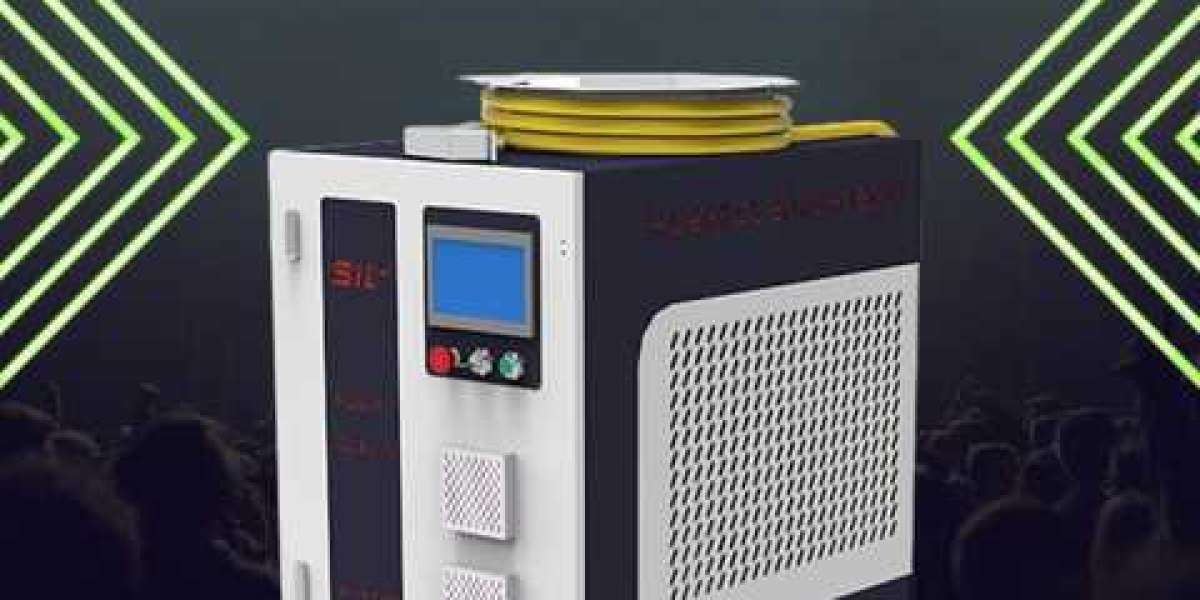A fiber laser cleaning machine is a sophisticated piece of equipment that uses a high-powered fiber laser to remove contaminants, rust, paint, coatings, and other unwanted materials from a variety of surfaces, primarily metals. Unlike traditional cleaning methods such as sandblasting, chemical treatments, or mechanical scraping, fiber laser cleaning offers a non-contact, precise method that targets only the unwanted layer, leaving the underlying surface intact.
The fiber laser generates a beam of light that is absorbed by the surface impurities. This light energy causes the contaminants to vaporize or detach from the surface, effectively cleaning the metal. The process is controlled with such precision that it can be finely tuned to clean different materials and thicknesses without overheating or damaging the base metal.
How Does Fiber Laser Cleaning Protect the Base Material?
One of the main reasons fiber laser cleaning machines are celebrated is their ability to clean without causing damage to the underlying surface. This is possible due to several factors inherent in the technology:
Precision Targeting: The laser beam is focused on microscopic areas of the surface contaminants, causing a localized reaction that removes rust, paint, or dirt without spreading heat to the surrounding metal. This minimizes the risk of warping, melting, or altering the metal.
Controlled Energy Delivery: Operators can adjust the power, pulse frequency, and scanning speed of the laser beam to match the type and thickness of the contaminant. This means that the laser delivers just enough energy to remove the unwanted layer without penetrating deeper into the metal.
Non-Abrasive Process: Since the laser cleaning method does not rely on physical abrasion, the base metal is not scratched or worn down during the cleaning process. Traditional methods often remove a thin layer of the metal alongside the contaminant, which can weaken or distort the surface.
No Chemical Residue: Unlike chemical cleaning, which may leave residues that could harm the metal or require further neutralization, fiber laser cleaning is purely physical. It removes contaminants cleanly without adding any substances that might react with or degrade the metal surface.
Applications Demonstrating Surface Restoration Without Damage
Industries ranging from aerospace and automotive to heritage conservation and electronics rely on fiber laser cleaning machines to restore surfaces with exacting care:
Aerospace: Aircraft components, such as turbine blades and landing gear, require cleaning that maintains strict dimensional tolerances. Fiber laser cleaning removes paint and corrosion without affecting the metal's microstructure, ensuring safety and performance.
Automotive: Rust and old paint layers on car bodies and engine parts can be efficiently stripped without denting or deforming the panels. This enables manufacturers and restorers to maintain the integrity of classic and modern vehicles.
Electronics: Sensitive components with delicate surfaces benefit from the non-contact cleaning approach, which removes oxidation and contaminants without risking static or thermal damage.
Heritage Conservation: Historical artifacts and monuments often have fragile surfaces. Fiber laser cleaning can remove centuries-old grime and pollutants layer by layer, preserving the original material underneath.
Why Traditional Methods Fail Where Fiber Laser Cleaning Excels
Before fiber laser cleaning machines, industries depended heavily on abrasive, chemical, or manual cleaning methods, each with its limitations:
Sandblasting and mechanical scraping often damage the surface by physically wearing away the base material.
Chemical treatments may weaken metals, leave harmful residues, or require extended neutralization processes.
Manual cleaning can be inconsistent, labor-intensive, and sometimes ineffective in removing embedded contaminants.
Fiber laser cleaning bypasses these issues by offering a solution that is fast, precise, and clean. This means it can restore surfaces closer to their original state, often better than any other method.
What Makes Fiber Laser Cleaning Machines So Effective at Preventing Damage?
The core technology of the fiber laser is based on optical fibers doped with rare-earth elements, allowing the laser to be highly efficient, compact, and stable. This fiber laser emits a beam at a wavelength that is absorbed preferentially by the contaminants rather than the metal itself. As a result, the laser energy heats and removes the contaminants quickly while the metal remains cool.
Moreover, the pulsed nature of many fiber lasers allows short bursts of energy, giving the surface time to dissipate heat between pulses. This pulse operation significantly reduces thermal stress on the metal and prevents micro-cracks or structural changes.
The equipment’s user interface and control systems provide operators with options to customize parameters based on surface types, cleaning requirements, and environmental conditions, further ensuring the safety of the base material.
How Does Fiber Laser Cleaning Affect Surface Integrity and Lifespan?
By avoiding damage to the base metal, fiber laser cleaning machines help extend the lifespan of components. Surfaces retain their original strength, corrosion resistance, and finish quality. This is particularly important for:
Structural metals where integrity is critical to safety.
Precision parts where dimensional accuracy must be maintained.
Decorative surfaces where aesthetics matter.
In contrast, traditional cleaning methods may cause micro-abrasions, pits, or uneven surfaces that can accelerate corrosion and wear over time.
Is Fiber Laser Cleaning Machine Suitable for All Metals?
Fiber laser cleaning machines are compatible with a wide range of metals including steel, aluminum, copper, titanium, and alloys. The adaptability of the technology means that the laser settings can be modified to suit different metal types and surface conditions.
However, certain reflective metals may require specific laser configurations to optimize absorption and cleaning efficiency without damage. Expert operators and advanced machines can handle these challenges, making fiber laser cleaning a versatile choice across many fields.
What About Environmental and Safety Concerns?
Fiber laser cleaning machines are environmentally friendly. They do not require chemicals or abrasive materials that produce hazardous waste, making them safer for operators and the environment. The process creates minimal dust or debris, which can be controlled with appropriate ventilation systems.
Safety features built into modern fiber laser cleaning machines, such as protective enclosures and automatic shut-offs, reduce the risk of accidents during operation.
Summary
The fiber laser cleaning machine stands out as a revolutionary technology for restoring metal surfaces without damaging the base material. Its precision targeting, controlled energy delivery, non-abrasive process, and clean operation allow it to remove contaminants effectively while preserving the underlying metal’s integrity. Industries across the spectrum benefit from its ability to safely clean and restore surfaces that would otherwise be compromised by traditional methods.
If your goal is to maintain or restore metal parts with the highest level of care and efficiency, a fiber laser cleaning machine offers a superior solution that safeguards the base material and enhances the longevity and quality of your assets.
Final Thoughts
The capability of fiber laser cleaning machine to restore metal surfaces without harm reflects the evolution of cleaning technology toward precision, sustainability, and efficiency. Investing in fiber laser cleaning equipment is not only a move toward superior surface preparation and restoration but also a step into a cleaner, safer, and more productive future. Whether you work in manufacturing, restoration, or maintenance, this technology delivers unmatched performance with a gentle touch that preserves the essence of your materials.








